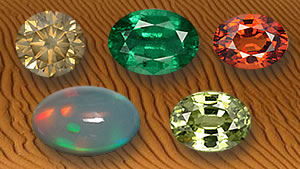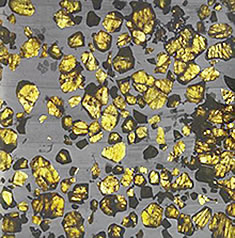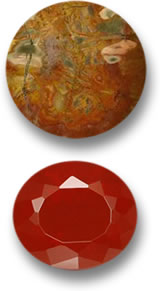|
|
Your Details
|
|
Your Details
|
Reviewed By Andreas Zabczyk
Desert Gemstones and Minerals Desert Gems: Diamond, Emerald, Spessartite, Opal and Demantoid Garnet
Gemstone deposits are found all over the world in various environments, from temperate mountainous regions to tropical rainforests. Some gemstones and minerals are found in the most inhospitable places such as under icy rivers or beneath the arid desert. The Sahara Desert of Africa is the largest hot desert and one of the harshest environments on Earth. However, the dry sands of the Sahara produce beneficial mineral dust that is blown across the Atlantic to the Amazon in incredible amounts. The dust is believed by scientists to provide nutrients (including phosphorus) for the soil that helps to sustain the Amazon rainforest. The dust comes from a basin that used to be a huge lake. The Sahara is also said to contain one of the largest deposits of gold in the world. Nearby Namibia is the driest country in Sub-Saharan Africa. It is situated between the Sahara and the Kalahari Desert, and has a coastal desert known as the Namib. The Namib Desert holds significant diamond deposits and tungsten is also mined there. Namibia has a number of other gemstone deposits, including spessartite garnet and demantoid garnet. Countries that border Namibia include Angola, which is known for its diamond and gold deposits, and Zambia, which produces some of the best emeralds in the world.  Peridot Stones in the Fukang Meteorite
The Asian Gobi Desert of China and Mongolia is a cold desert which has significant mineral reserves, including copper, silver and gold. Some are comparing the scale of the precious metals of the Gobi to the historic gold rush of California. A rare pallasite meteorite studded with peridot gemstones was found in the year 2000 in the Gobi Desert. The Fukang Meteorite is believed to be around 4.5 billion years old, which is the same age as our solar system. During their Manhattan auction in April 2008, Bonhams presented the main mass for sale, anticipating a price of US$2,000,000. However, despite their expectations, the lot went unsold. Another Asian Desert is located in India and is called the Thar Desert or Great Indian Desert. It is situated between India and Pakistan; most of it lies within the borders of India and in the state of Rajasthan. The Thar Desert is said to be the most densely populated of the world's deserts. The Pink City of Jaipur is the largest city of Rajasthan and is an important center for gem and jewelry trade. Rajasthan has produced a great quantity of stone, such as the famous white marble from Makrana, which was used to build the Taj Mahal in Agra. With regard to gemstones, Rajasthan has produced gems such as emerald, aquamarine, chrysoberyl, amethyst, garnet, tourmaline, andalusite, apatite and sphene. "Desert Diamonds" or "Al-Qaysumah Diamonds" can be found in the Arabian Desert. However, before you go out looking for them in the hot sun, be aware that these are actually quartz, rather than diamond. In New Mexico, there are similar quartz gems that are known as "Pecos Diamonds". In nearby Arizona and other parts of the US, "Apache Tears" can be found. This is a trade name for rounded nodules of a volcanic glass called obsidian. Some Native American Indians believe that these obsidian gems hold healing powers. A great deal of other gemstones have been found in Arizona, such as opal, garnet, jade, jasper, azurite, malachite and chrysocolla. Tucson, Arizona, on the edge of the Sonoran Desert, is the location of the largest gem and mineral show in the world. Arizona has a long history of silver, copper and mineral mining.  Petrified Wood and Mexican Fire Opal
Further down south, in the semi-arid region of Querétaro of Mexico, fire opal is found. In the Patagonian Desert of Argentina is a forest of petrified wood said to be the largest petrified trees on Earth, with trees measuring over 3 meters in diameter and 30 meters in length. Petrified wood is preserved material that has been replaced by minerals. These minerals make the wood hard, yet it retains its organic structure, giving it an interesting and unique appearance. It is polished and used as gemstones, often in slices. The gemstones have various colors depending on the presence of different chemical elements. Petrified wood is also seen in many other areas of the world including the USA, Ukraine, Australia, Europe, Libya and India. The Great Victoria Desert of South Australia is well-known for producing opal gemstones. In fact, Australia produces around 95% of the world's precious opal. Famous mining locations are Lightning Ridge and Coober Pedy. Coober Pedy is a desert town on the edge of the Australian outback and is sometimes called "the opal capital of the world" because of the amount of precious opal mined there. Lightning Ridge is a semi arid area known for being a source of black opal. It is interesting that opal comes from such a dry climate, since opal contains up to 30% water. The above are just some of the world's deserts and sources of gemstones and minerals. While deserts are hostile landscapes in which it is difficult for people, animals and plants to survive, a wealth of minerals may be found below the surface of the sands. |
